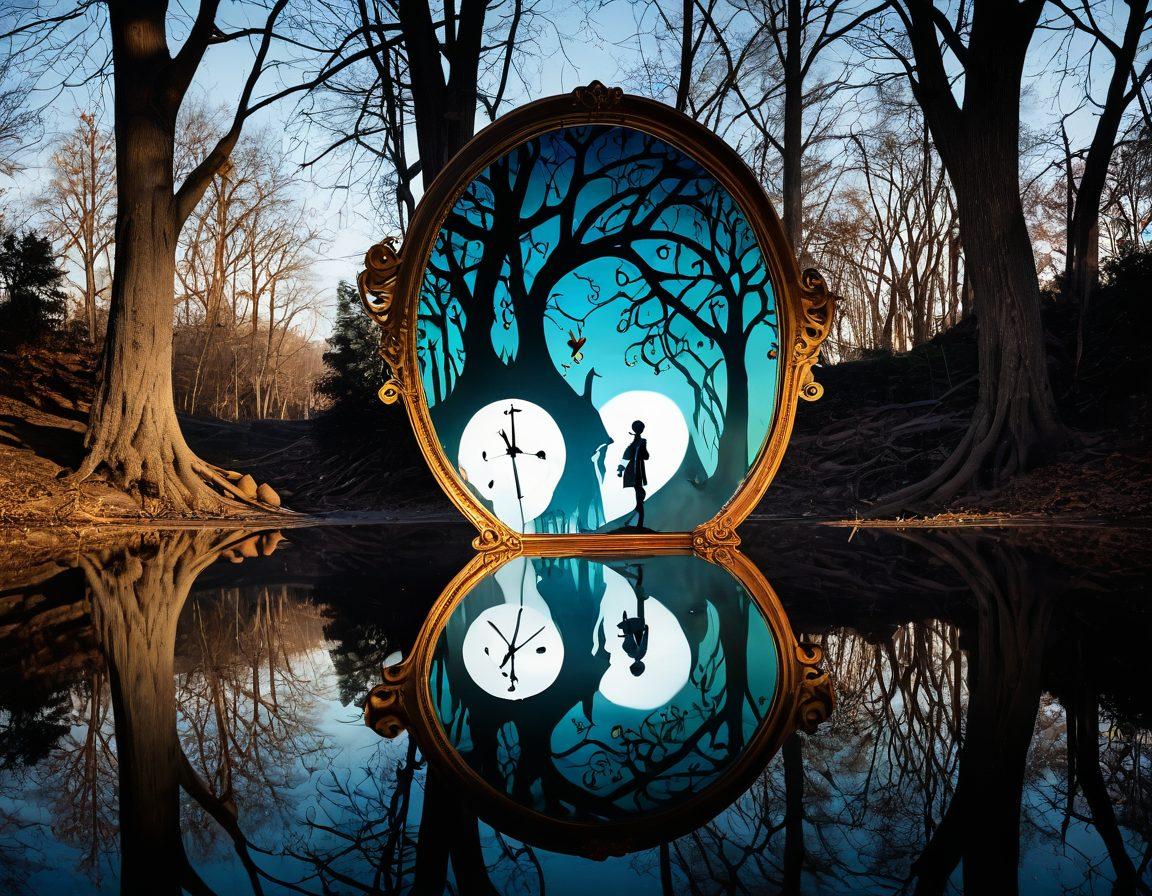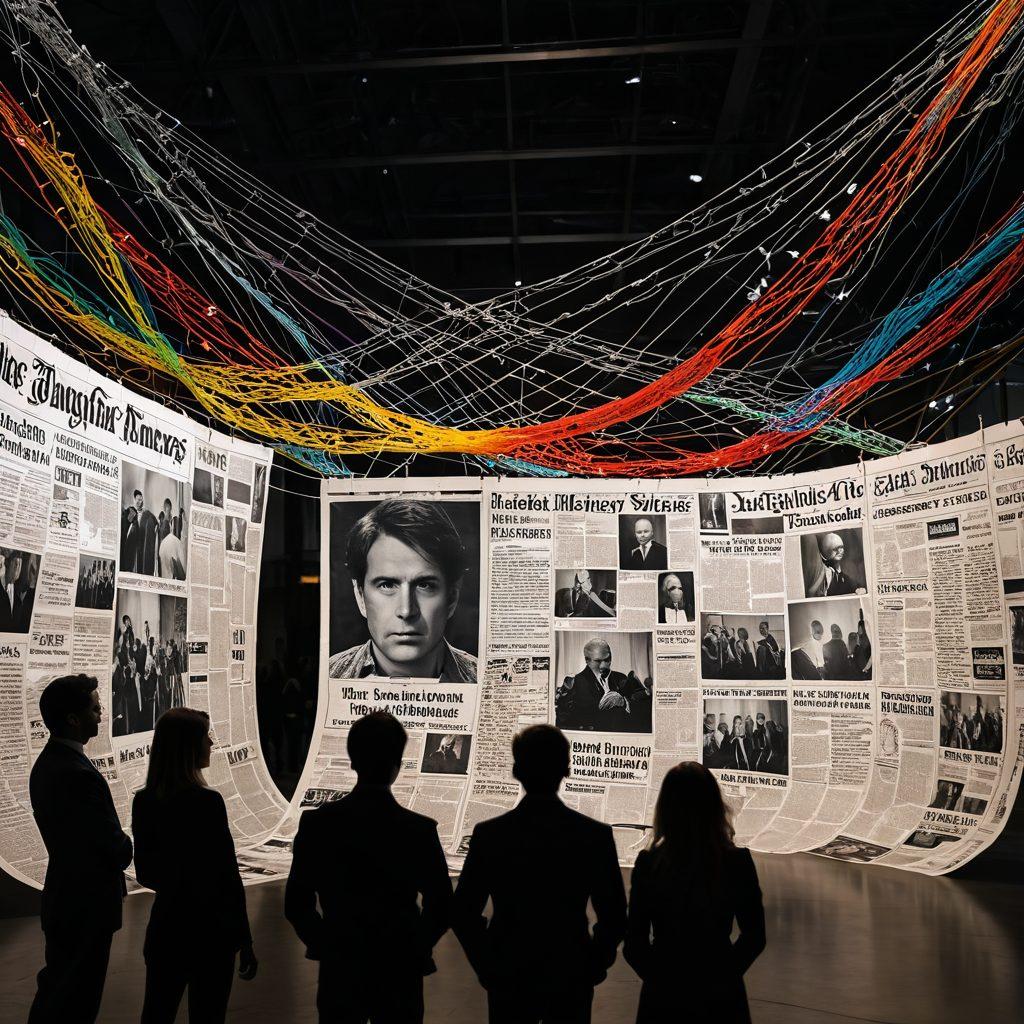Unmasking the Sad Truth: Navigating the World of Hoaxes and Deception
In a world dominated by screens and social media, we often find ourselves at the mercy of fabricated stories that masquerade as truth. The darkness behind these stories reveals a sad truth about our society: we are surrounded by deception, trickery, and false narratives. How often do we stop to question the validity of what we read? Every day, we encounter messages that provoke emotion, incite fear, or even lead to mass hysteria—all rooted in malinformation and disinformation. Understanding the mechanics behind these fabricated stories is essential if we hope to navigate through the fog of misleading content.
Imagine scrolling through your news feed, only to encounter a sensational headline that piques your curiosity. Your heart races as you click, eager to unravel a scandal, conspiracy or a new 'truth.' But what happens when that reality turns out to be nothing more than an illusion? This phenomenon isn't just the sad randomness of the internet; it’s a calculated method behind deception meant to manipulate us. 'Scams work because they prey on our desire to believe in something,' declared one expert. The seductive power of these tales leaves us longing for certainty, yet simply leads us further into a quagmire of falsehood and misrepresentation.
The art of bamboozle is alive and well, as scammers and conspiracy theorists weave webs of intrigue to keep us hooked. Whether it's an exaggerated rumor about a celebrity or a fabricated story that attempts to undermine governmental trust, these narratives often thrive in our digital age. Think about it—how easy is it to pass along a piece of misinformation, all while believing it's the truth? The deep-seated sadness that accompanies such realizations should encourage us to question more and share responsibly. While the allure of fake news may be intoxicating, the repercussions of continuing down this path can lead to widespread societal misunderstanding and mistrust.
So how do we arm ourselves against this pervasive deception? First off, become a discerning consumer of information. Cross-reference sources, look for credible voices, and never underestimate the power of a skeptical mind. It's no secret that knowledge is power, and the more informed we are, the harder we become to fool. Furthermore, when we approach conversations with an open heart while also carrying a cautious mind, we strike a balance that can dismantle the charade of false reality. After all, every bit of knowledge we gain shatters the powerful illusion that deception produces.
Ultimately, the fight against fabricated stories and the sadness they spread requires a unified effort. Let’s foster a culture of honesty, actively calling out fraud and false information wherever we encounter it. The path of understanding the mechanics of these deceptions might seem daunting, but remember, each of us holds the potential to expose the truth. By drawing upon our collective strength, we can create a more knowledgeable society, and maybe, just maybe, we can transition from a world infused with deception to one that values truth and authenticity.
The Anatomy of a Hoax: How Illusion and Trickery Shape Our Perception
Have you ever found yourself caught up in a story so captivating that it turned your world upside down, only to find out later that it was nothing but a fabrication? Welcome to the complex anatomy of a hoax, where illusion and trickery shape our perception of reality. In a world awash with false information and fabricated stories, the ability to discern truth from deception becomes essential. But why do these scams and charades resonate with us so deeply? What drives the sadness connected to uncovering the untruth in our lives?
Consider the classic example of the infamous 'War of the Worlds' radio broadcast. Orson Welles' 1938 performance sparked mass panic based on a terrifying narrative that turned out to be merely a fictional ruse. This event not only highlighted the potency of media in spreading disinformation but also demonstrated how easily a false narrative can plunge an entire population into fear and confusion. It poses the question: why are we so susceptible to believing in myths and misleading reports? It could be that our innate curiosity and desire for connection with a narrative often override our critical thinking skills.
As we peel back the layers of deception that underlie many hoaxes, we uncover various tactics employed by those who thrive on trickery. From crafting compelling stories that elicit emotional responses to the strategic use of scandalous headlines designed to bamboozle us into clicking, the art of misrepresentation is an age-old practice. The course of human history is dotted with moments of fraud and subterfuge, each revealing tantalizing insights into our psychological motivations. Ask yourself – have you ever shared a rumor or a piece of fake news, only to feel a tug of regret upon discovering the truth?
Moreover, understanding the power of malinformation and disinformation expands our perspective on human behavior. Each hoax can be traced back to an intention—whether that be profit, entertainment, or even political manipulation. In recent years, the rise of social media platforms has only amplified the reach and impact of these falsehoods, fostering an environment where charades can spread like wildfire. As we navigate through the multitude of voices online, how can we shield ourselves from falling victim to fabricated stories that prey on our vulnerabilities?
In our quest to demystify the world of deception, it becomes vital to equip ourselves with knowledge and tools to critically evaluate the information bombarding us daily. Simple practices such as verifying sources, questioning sensationalist content, and embracing a mindset of skepticism can protect us from falling prey to the elaborate illusions that abound. Remember, in the realm of perception, awareness is our greatest ally against the darkness of deceit. So, the next time you encounter something that seems too good (or too bad) to be true, pause and reflect—could it be a hoax designed to trick you?
From Fake News to Conspiracies: Unraveling the Web of False Narratives
In a world flooded with information, discerning truth from deception has never been more challenging. Each day, we are bombarded with headlines that spark outrage, fear, or sometimes even laughter—only to discover they are built on fabrication and trickery. The sadness that arises from this constant barrage of hoaxes and false narratives is palpable. What was once a reliable source of news has become a tangled web of scams and charades, where fake news thrives and echoes in the corridors of social media. How did we arrive at such a bewildering state?
We often find ourselves sharing stories that resonate with us, or at least, we think they do. But what if those stories are nothing more than illusions? Consider the viral post you stumbled upon last week, the one that triggered discussions among friends and family. Did you stop to verify that tale, or was it convenient to embrace the narrative it presented? The reality is that many people have unwittingly become spreaders of malinformation, mistaking false information for truth, succumbing to the deceptive allure of a well-crafted lie. It's time to take a step back and ask ourselves, "What am I contributing to the conversation?"
Navigating through the murky waters of disinformation is an essential skill in today's society. Each fabricated story can lead to division, misunderstanding, and the perpetuation of conspiracy theories. The real tragedy lies in the erosion of trust—not just in our sources of information but in each other. As we sift through the rubble of misleading tales, we must remember: every rumor and every unfounded claim has the potential to create a ripple effect, influencing opinions, behaviors, and even policies. The question is, can we be vigilant enough to hold ourselves accountable for the stories we propagate?
Imagine this: a community rallying together to fight against a fictitious threat, spurred on by an enchanting tale of conspiracy that bears no truth. It’s fascinating how easily people can fall prey to such deception—what makes us vulnerable to these narratives? Perhaps it’s the need for belonging or the human inclination towards storytelling that blinds us to the falsity and fabrications lurking just beneath the surface. Just like that, confidence is misplaced, and sadness creeps in when we realize the charade being played. We must rediscover our commitment to truth by questioning everything we hear, ensuring we’re not caught in a cycle of subterfuge.
As consumers of information, understanding the tactics behind these elaborate scams is crucial. With the rise of social media, the line between reality and myth has blurred. Scammers and con artists have fine-tuned their ability to bamboozle the public, often using sensationalism to drive engagement. We must learn to identify the signs of malinformation; it may not be easy, but it’s a necessary endeavor if we wish to curate a healthier environment for discourse. Our society deserves more than a parade of pretense; it requires a commitment to seek out truth and authenticity. With every click, like, and share, we wield immense power in shaping the narratives that mold our society. How will you choose to use this power in a world rife with deception?


